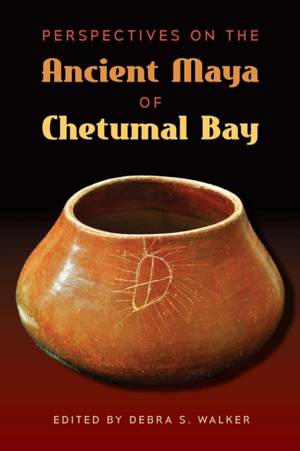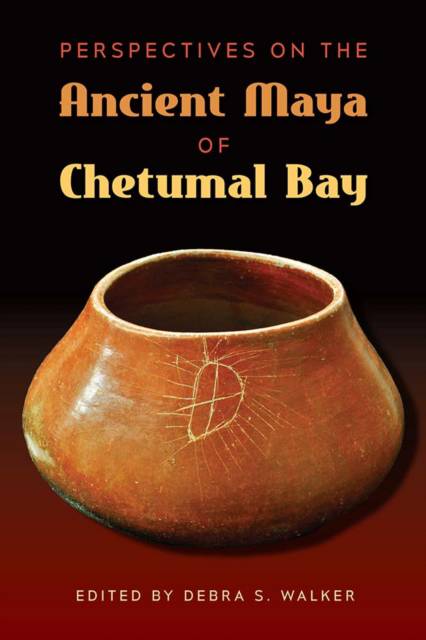
Je cadeautjes zeker op tijd in huis hebben voor de feestdagen? Kom langs in onze winkels en vind het perfecte geschenk!
- Afhalen na 1 uur in een winkel met voorraad
- Gratis thuislevering in België vanaf € 30
- Ruim aanbod met 7 miljoen producten
Je cadeautjes zeker op tijd in huis hebben voor de feestdagen? Kom langs in onze winkels en vind het perfecte geschenk!
- Afhalen na 1 uur in een winkel met voorraad
- Gratis thuislevering in België vanaf € 30
- Ruim aanbod met 7 miljoen producten
Zoeken
Perspectives on the Ancient Maya of Chetumal Bay
€ 137,45
+ 274 punten
Omschrijving
"Brings novel, synthetic insight to understanding a region that was a hub of waterborne trade and an important locus of production for some of the Maya's most valued crops."--Cynthia Robin, author of Everyday Life Matters: Maya Farmers at Chan "This one of a kind volume shows us how important this region was to the ancient Maya with detailed and vivid descriptions of sociopolitical and economic organization and their relation to the unique landscape and geography of Chetumal Bay."--Laura J. Kosakowsky, author of Preclassic Maya Pottery at Cuello, Belize Chetumal Bay is central to discussions of ancient Maya politics, warfare, economy, exchange and communication because of its unique location. Although the ancient Maya invested prodigious amounts of labor in the construction of road systems called sacbeob for communication and trade, recent archaeological discoveries around Chetumal Bay in both Belize and Mexico reveal an economic alternative to these roads: an extensive network of riverine and maritime waterways. Focusing on sites ringing the bay such as Cerro Maya, Oxtankah, and Santa Rita Corozal, the contributors to this volume explore how the bay and its feeder rivers affected all aspects of Maya culture from settlement, food production, and the production and use of special goods to political relationships and social organization. Besides being a nexus for long distance exchange in valuable materials such as jade and obsidian, the region was recognized for its high quality agricultural produce, including cacao, achiote, vanilla, local fruits, honey, and salt, and for its rich marine environment. The Maya living on the fringes of the bay perceived the entire region as a single resource procurement zone. Waterborne trade brought the world to them, providing a wider horizon than would have been available to inland cities dependent only on Maya roads for news of the world. The research reveals that trade relations played a central role in the organization of human social life on Chetumal Bay.
Contributors: James Aimers Timothy Beach Clifford Brown Beverly A. Chiarulli Lisa G. Duffy Dori Farthing David A. Freidel Elizabeth Graham Thomas Guderjan Elizabeth Haussner Linda Howie Samantha Krause Javier López Camacho Sheryl Luzzadder-Beach Marc D. Marino Lucas R. Martindale Johnson Heather McKillop Nathan J. Meissner Emiliano Ricardo Melgar Tísoc Susan Milbrath Satoru Murata Maxine Oland Terry Powis Kathryn Reese-Taylor Robin Robertson Luis A. Torres Díaz Araceli Vázquez Villegas Debra S. Walker
A volume in the series Maya Studies, edited by Diane Z. Chase and Arlen F. Chase
Contributors: James Aimers Timothy Beach Clifford Brown Beverly A. Chiarulli Lisa G. Duffy Dori Farthing David A. Freidel Elizabeth Graham Thomas Guderjan Elizabeth Haussner Linda Howie Samantha Krause Javier López Camacho Sheryl Luzzadder-Beach Marc D. Marino Lucas R. Martindale Johnson Heather McKillop Nathan J. Meissner Emiliano Ricardo Melgar Tísoc Susan Milbrath Satoru Murata Maxine Oland Terry Powis Kathryn Reese-Taylor Robin Robertson Luis A. Torres Díaz Araceli Vázquez Villegas Debra S. Walker
A volume in the series Maya Studies, edited by Diane Z. Chase and Arlen F. Chase
Specificaties
Betrokkenen
- Uitgeverij:
Inhoud
- Aantal bladzijden:
- 320
- Taal:
- Engels
- Reeks:
Eigenschappen
- Productcode (EAN):
- 9780813062792
- Verschijningsdatum:
- 4/10/2016
- Uitvoering:
- Hardcover
- Formaat:
- Genaaid
- Afmetingen:
- 156 mm x 234 mm
- Gewicht:
- 766 g

Alleen bij Standaard Boekhandel
+ 274 punten op je klantenkaart van Standaard Boekhandel
Beoordelingen
We publiceren alleen reviews die voldoen aan de voorwaarden voor reviews. Bekijk onze voorwaarden voor reviews.








